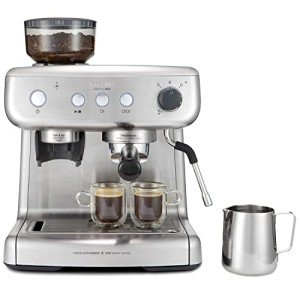Home Use Espresso Machines: A Comprehensive Guide
Espresso machines have actually ended up being a staple in lots of families as coffee enthusiasts seek to reproduce café-quality brews in the comfort of their cooking areas. The increase in popularity has actually caused a varied market filled with numerous designs, features, and costs. This short article intends to offer a useful introduction of home use espresso machines, assisting readers navigate their alternatives successfully.
Understanding Espresso Machines
Espresso machines work by requiring warm water through finely-ground coffee under high pressure, resulting in a focused coffee beverage understood as espresso. There are numerous types of espresso machines classified based on their developing approaches and level of automation. The most typical types include:
- Manual Espresso Machines: These require the user to manage the pressure and water circulation, enabling a more hands-on coffee-making experience.
- Semi-Automatic Espresso Machines: These provide automatic control over water pressure, while the user by hand grinds and tamps the coffee.
- Automatic Espresso Machines: With the push of a button, these machines immediately manage the circulation of water, making it much easier to brew espresso with constant outcomes.
- Super-Automatic Espresso Machines: These all-in-one machines handle grinding, tampering, developing, and even milk frothing, making them ideal for users searching for benefit.
- Pill or Pod Machines: These use pre-packaged coffee pods to produce espresso with minimal effort, however they limit option in developing techniques and tastes.
Table: Comparison of Espresso Machine Types
| Type | Control Level | Relieve of Use | Cleaning up Level | Ideal For |
|---|---|---|---|---|
| Manual | User-controlled | Moderate | High | Coffee perfectionists |
| Semi-Automatic | Partial automation | Moderate | Moderate | Home baristas |
| Automatic | Totally automated | Easy | Low | Busy individuals |
| Super-Automatic | Totally automated | Very simple | Really low | Convenience applicants |
| Capsule/Pod | Totally automated | Really easy | Very low | Casual drinkers |
Key Features to Consider
When picking a home use espresso machine, it's important to think about different functions that can considerably affect the quality of espresso and user experience.
- Pressure: Look for machines that provide at least 9 bars of pressure, as this is considered optimal for brewing espresso.
- Boiler Systems: Single vs. dual boiler systems determine temperature stability and the ability to brew espresso and steam milk concurrently.
- Grinder: Integrated grinders permit freshly ground coffee, which improves flavor. Consider machines with adjustable grind settings.
- Milk Frother: For those who take pleasure in coffees and lattes, a built-in steam wand or automatic frother is vital.
- Size and Design: Consider your cooking area area and visual choices. Machines are available in various sizes, from compact to large setups.
- Cost: Home espresso machines can vary from a few hundred to a number of thousand dollars, so it's essential to develop a budget before checking out choices.
Benefits and drawbacks of Home Use Espresso Machines
| Pros | Cons |
|---|---|
| Convenience of developing coffee in the house | Initial financial investment can be high |
| Quality of espresso is typically remarkable | Needs some skill, especially with manual machines |
| Capability to experiment with tastes | Maintenance and cleaning can be labor-intensive |
| Can save cash in the long run | Not all machines will fit every coffee choice |
Maintenance and Cleaning Tips
Preserving an espresso machine is important for lengthening its life and making sure consistent brew quality. Here are some useful tips:
- Regular Descaling: Minerals from water can develop up in the machine. Descale every 1-3 months, depending on water hardness.
- Daily Cleaning: Rinse portafilters, baskets, and steam wands after each use to avoid coffee oils from developing residue.
- Use Filtered Water: This can help in reducing mineral accumulation and enhance the taste of coffee.
- Change Gaskets and Seals: These parts might break over time and must be changed to keep pressure and performance.
- Check out the Manual: Each machine has specific care guidelines; following these will make sure durability.
Frequently Asked Questions About Home Use Espresso Machines
Q1: What is the best budget espresso machine?The best budget espresso machine typically depends upon private requirements, but models like the DeLonghi EC155 or the Breville Bambino are popular amongst users for providing excellent worth. Q2: How long do home espresso machines generally last?With appropriate upkeep, home espresso machines can last anywhere from 5 to 15 years, depending on the quality of the machine and frequency of use. Q3: Can I make coffees and lattes with any espresso machine?While most espresso machines can make cappuccinos and lattes, having a dependable
steam wand or frother is essential for attaining the right milk texture.
Q4: Are super-automatic machines worth the investment?For Espresso Maker Online who prioritize convenience and fast developing, super-automatic machines can be worth the investment, though they may do not have some customizability in brew strength and flavor. Q5: What kinds of coffee beans are best for espresso?While individual preference contributes, beans identified as" espresso "blends are normally roasted darker, producing abundant flavors and a velvety texture when brewed.
Investing in a home espresso machine can transform the daily coffee routine into something unique, raising home brews to café quality. By understanding the different kinds of machines, essential features to consider, maintenance needs, and weighing the
advantages and disadvantages, consumers can make educated decisions that fit their individual preferences. As the espresso culture continues to grow, no matter the choice, every brew can be a scrumptious experience waiting to be relished.

